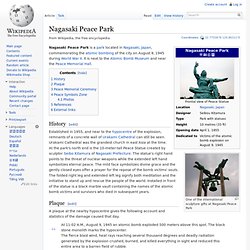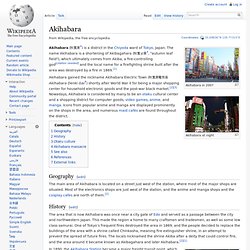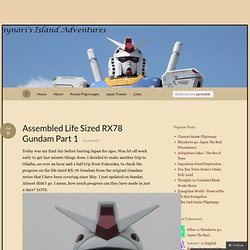

Hiroshima Peace Memorial. Hiroshima Peace Memorial (広島平和記念碑, Hiroshima heiwa kinenhi?)

, commonly called the Atomic Bomb Dome or Genbaku Dōmu (原爆ドーム? , A-Bomb Dome), in Hiroshima, Japan, is part of the Hiroshima Peace Memorial Park and was designated a UNESCO World Heritage Site in 1996. The ruin serves as a memorial to the people who were killed in the atomic bombing of Hiroshima on August 6, 1945. Over 70,000 people were killed instantly, and another 70,000 suffered fatal injuries from the radiation.[1] History of the Genbaku Dome[edit] The building was designed by the Czech architect Jan Letzel.
The building now known as the Genbaku (A-Bomb) Dome was the only structure left standing near the bomb’s hypocentre.[3] The dome was initially scheduled to be demolished with the rest of the ruins, but the majority of the building was intact, delaying the demolition plans. From 1950 through 1964, the Hiroshima Peace Memorial Park was established. Atomic bombing[edit] Preservation[edit] UNESCO World Heritage Site[edit] Nagasaki Peace Park. One of the international sculpture gifts at Nagasaki Peace Park Nagasaki Peace Park is a park located in Nagasaki, Japan, commemorating the atomic bombing of the city on August 9, 1945 during World War II.

It is next to the Atomic Bomb Museum and near the Peace Memorial Hall. History[edit] Akihabara. Akihabara in 2007 Akihabara at night Akihabara (秋葉原?)

Is a district in the Chiyoda ward of Tokyo, Japan. The name Akihabara is a shortening of Akibagahara (秋葉が原? , "autumn leaf field"), which ultimately comes from Akiba, a fire-controlling god[citation needed] and the local name for a firefighting shrine built after the area was destroyed by a fire in 1869.[1] Akihabara gained the nickname Akihabara Electric Town (秋葉原電気街, Akihabara Denki Gai?) Geography[edit] The main area of Akihabara is located on a street just west of the station, where most of the major shops are situated. History[edit] The area that is now Akihabara was once near a city gate of Edo and served as a passage between the city and northwestern Japan.
Between stores in Akihabara In 1890, the Akihabara Station became a major freight transit point, which allowed a vegetable and fruit market to spring up in the district. Otaku culture[edit] Maids promoting maid cafes near Akihabara Station. Assembled Life Sized RX78 Gundam Part 1 « Punynari's Island Adventures. Today was my final day before leaving Japan for ages.

Was let off work early to get last minute things done. I decided to make another trip to Odaiba, an over an hour and a half trip from Yokosuka, to check the progress on the life sized RX-78 Gundam from the original Gundam series that I have been covering since May. I just updated on Sunday. Almost didn’t go. I mean, how much progress can they have made in just 2 days? I can not describe the feeling of seeing this. Easily the most cool thing I’ve ever seen in my entire life. The amount of detail is incredible. This shoot was a bit embarrassing because the construction workers were looking at me and taking pics of me while I was doing a massive photo shoot. A quick note real quick. More 1/1 scale Gundam awesomeness in part 2.Part 2 of Assembled Gundam Coverage A final visit to the Gundam, 2 days before it was taken down.Final Visit to the Odaiba Gundam Like this: Like Loading... Japan Travels 2013 - Giant GUNDAM statue!
Real Scale GUNDAM in twilight Odaiba, Tokyo. Nara Park. Tea Garden By Nara Park Within the park is a Chaya or traditional Japanese teahouse, offering tea and wagashi.

Nara Park (奈良公園, Nara Kōen?) Is a public park located in the city of Nara, Japan, at the foot of Mount Wakakusa, established in 1880. Administratively, the park is under the control of Nara Prefecture. The park is one of the "Places of Scenic Beauty" designated by the Ministry of Education, Culture, Sports, Science and Technology (MEXT). Jinrikisha (人力車, or ricksha) services can be found near the entrances to popular sites as Tōdai-ji or Kōfuku-ji.